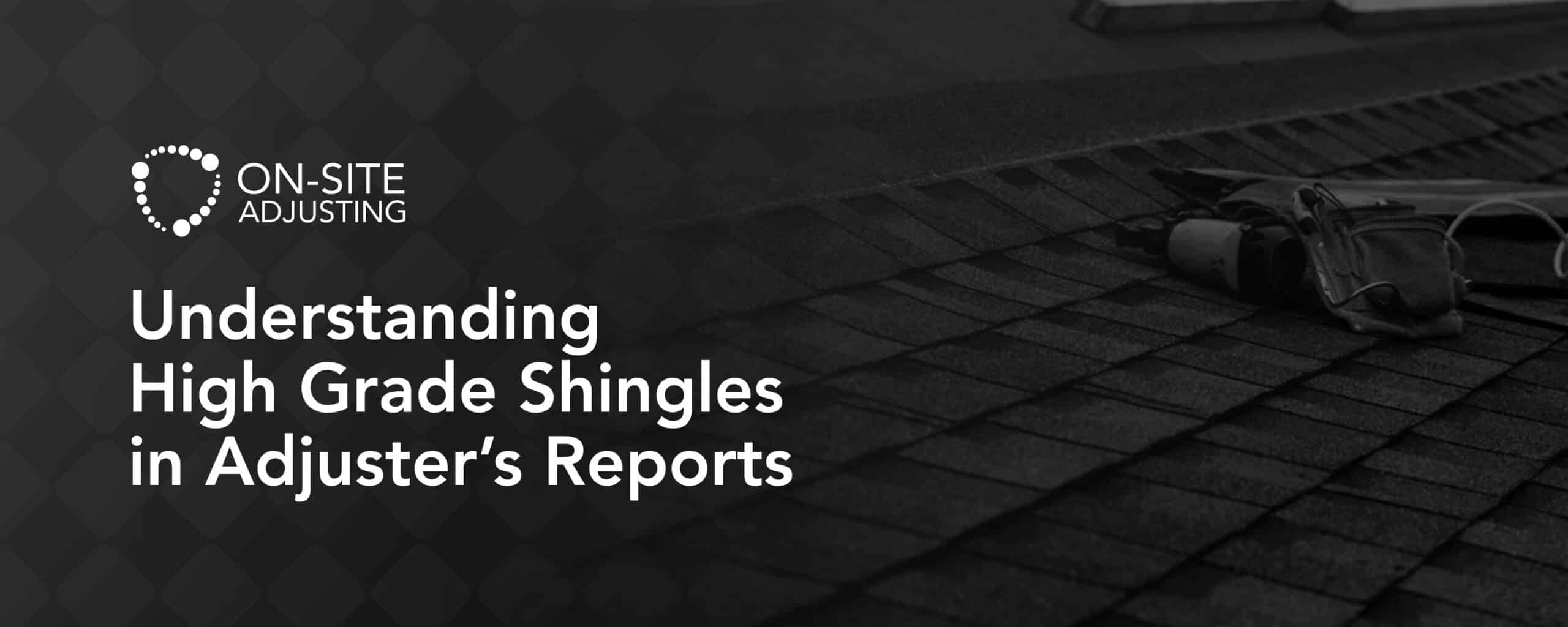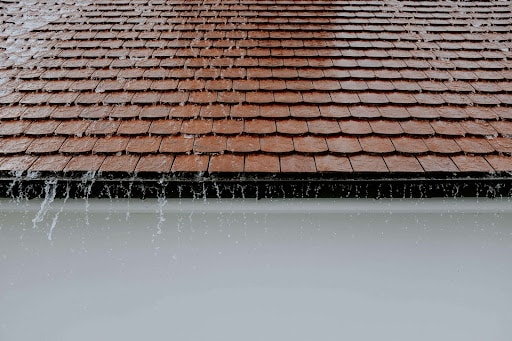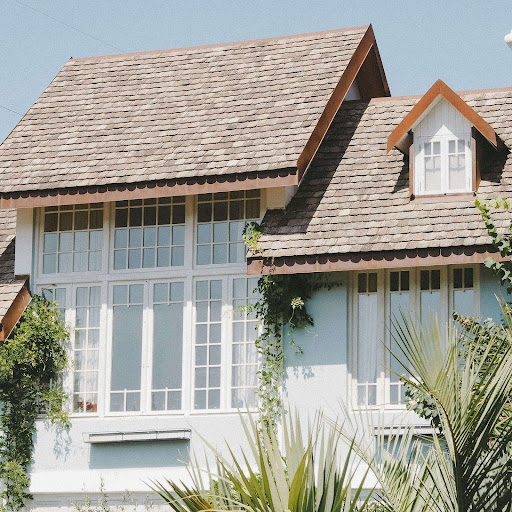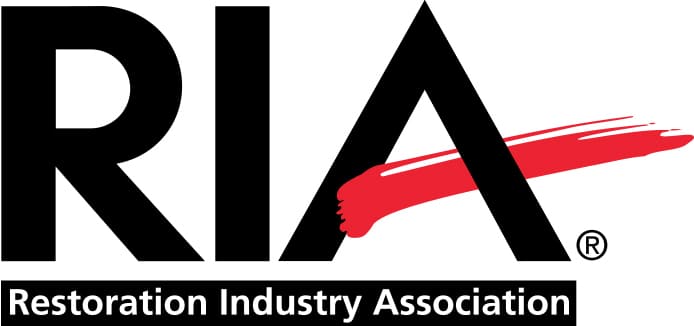
Many modern homes have shingles on their roofs making shingles a popular and common roof covering. When a roof suffers damage, these shingles may crack, break, or be compromised in other ways. If you file a roof damage claim, both your public adjuster and the insurance adjuster will examine your shingles. This helps them determine the extent of damage and necessary repairs.

In this article, we will explain exactly what high-grade shingles are when you see them in an adjuster’s report. Additionally, we will explain the different grades of shingles and how to determine the quality of your current roof shingles.
What is a High-Grade Shingle?
High-grade shingles represent the upper echelon of roofing materials. They offer superior durability, weather resistance, and longevity compared to lower-grade options. Typically, these shingles feature advanced manufacturing processes and materials, making them an investment worth considering for homeowners.
High-grade shingles often consist of materials such as fiberglass and ceramic granules. These components contribute to their strength and ability to withstand harsh weather conditions. Moreover, they frequently come with extended warranties, which can offer peace of mind to homeowners. Beyond durability, high-grade shingles provide aesthetic appeal. This is because they have a three-dimensional look.
What Are the Different Grades of Shingles?
Shingles fall into three primary categories: standard-grade, mid-grade, and high-grade shingles. Each category possesses distinct characteristics that influence their performance, appearance, and price.
Standard-Grade Shingles
As you may have guessed, these shingles are the most affordable option on the market. Standard-grade shingles are usually made up of one material which is why they are cheaper compared to the other two grades. Not only are they cheaper, but they are also less thicker and have the shortest warranty. Nevertheless, they are a popular option and work well for property owners with a limited budget. Examples of these shingles are 3-tab asphalt shingles and wood shakes.
Mid-Grade Shingles
Mid-grade shingles are also known as architectural or dimensional shingles. Unlike the standard-grade, mid-grade shingles have multiple layers and thus, more thickness. These layers create a more textured look, mimicking the appearance of natural materials like wood or slate. The added thickness enhances their durability and resistance to wind and rain.
Furthermore, mid-grade shingles have a longer warranty with manufacturers providing over 20-year warranties. While they cost more than standard-grade, they are a wise investment. This is because they are both aesthetically pleasing and durable.
High-Grade Shingles
These are also referred to as premium or luxury shingles and they represent the highest grade in roofing materials. High-grade shingles have the longest lifespan and warranty of all three grades of shingles. Manufacturers often give warranties lasting upwards of 50 years provided you have proof of proper roof maintenance.

High-grade shingles are made up of more materials and this makes them more durable. They are more resistant to storm, wind, and hail damage. Additionally, they are more aesthetically pleasing due to the texture from the blend of different materials. Homeowners can choose from a wide range of styles, colors, and textures. While they are expensive, they offer peace of mind to homeowners who can afford them.
How to Determine Shingle Quality
Determining shingle quality involves several key factors. Adjusters use specific criteria to assess the condition and grade of shingles. It will be easier to make an informed decision regarding roof shingles when you know the criteria.
Material Composition
The first aspect to evaluate is material composition. High-grade shingles typically use advanced materials. For example, fiberglass in architectural and premium shingles enhances durability. Homeowners should also consider whether the shingles contain ceramic granules. These granules protect against UV rays and contribute to longevity.
In contrast, lower-grade shingles often use less durable materials such as plastic. This distinction plays a significant role in overall performance. Adjusters often look for signs of wear or damage in the material when conducting evaluations.
Warranty Information
Warranty information provides essential insight into shingle quality. High-grade shingles usually come with extensive warranties, often lasting decades. Homeowners should carefully read the warranty terms to understand coverage and limitations.
Adjusters often reference warranty details during evaluations. A longer warranty often indicates confidence from the manufacturer regarding the product’s durability. In some cases, warranties also indicate that the shingles meet specific industry standards.
Age of the Shingles
The age of the shingles greatly impacts their quality. While high-grade shingles can last 50 years or more, older shingles may show signs of deterioration. Homeowners should keep track of when the roof was installed.
During an inspection, adjusters will note the age of the shingles. They often correlate the age with the expected lifespan to assess the need for replacement or repair. Aging shingles may have cracks, curling, or missing granules, which signify degradation.
Visual Inspection
A visual inspection is critical for assessing shingle quality. Homeowners can look for several indicators of wear and tear. For instance, curling edges often signal that shingles have reached the end of their lifespan. Similarly, missing granules expose the underlying material, increasing vulnerability to the elements.
Adjusters typically perform detailed visual inspections. They search for signs of damage, discoloration, or misalignment. They also evaluate the overall condition of the shingles, which informs their reports.
Performance Under Stress
Finally, consider the performance of shingles under stress. High-grade shingles are designed to withstand harsh weather conditions. For example, they should resist wind uplift and heavy rain. Homeowners in storm-prone areas should pay particular attention to this aspect.
Adjusters will examine past performance during evaluations. They often consider whether the roof has sustained damage during storms. This history provides valuable context for assessing shingle quality and necessary repairs.
Conclusion
You can make better decisions when you know what the adjuster is looking for during inspections. The type of roof shingles you purchase can affect your insurance rates, policies, and claims. Therefore, it is best to consider these shingles as a long-term investment rather than a short-term one.
Roof damage claims can leave you in hundreds of thousands of debt if your insurer denies your claim. On-Site Adjusting can help you avoid that situation. We offer a free consultation for first-timers who are not sure how we can help. Contact us and let us make your claim successful today.












